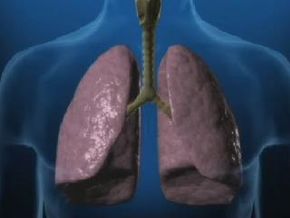The respiratory system is the group of tissues and organs in your body that enable you to breathe. This system includes your airways, your lungs and the blood vessels and muscles attached to them that work together so you can breathe. The respiratory system's primary function is to supply oxygen to all the parts of your body. It accomplishes this through breathing: inhaling oxygen-rich air and exhaling air filled with carbon dioxide, which is a waste gas.
The respiratory system is made up of airways (your nose, mouth, voice box, windpipe and bronchial tubes) and the lungs and the muscles and blood vessels connected to them.
Advertisement
This is how the respiratory system works: First you breathe air in through your nose and mouth, which wet and warm the air so it won't irritate your lungs. Then the air travels through your voice box, down your windpipe and then though two bronchii (bronchial tubes) into your lungs. Cilia (tiny mucous-covered hairs) in your airways entrap foreign particles and germs to filter the air that you breathe. You then cough or sneeze the particles out of your body.
The diaphragm, abdominal muscles and other muscles help your lungs expand and contract so you can inhale and exhale. When you inhale, the air goes through the bronchii in your lungs to blood vessels that connect to veins and arteries. These veins and arteries carry the blood throughout your body. When you exhale, the carbon dioxide goes out the same way, exiting your body through your nose and mouth. If you can't breathe or can't breathe well, not only will your body not receive enough oxygen to keep it running, but it will also be poisoned by the carbon dioxide that is building up in your blood and has nowhere to go.
Advertisement
